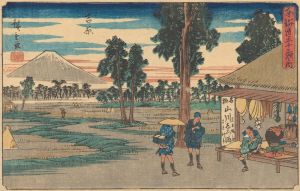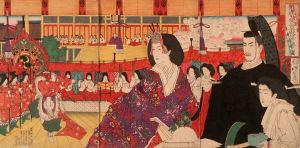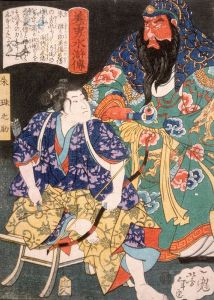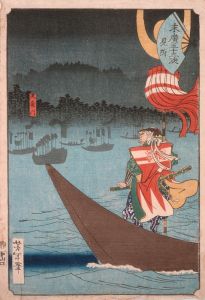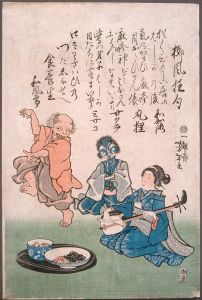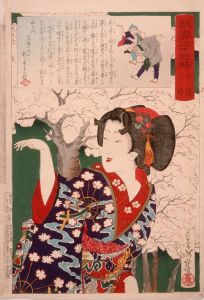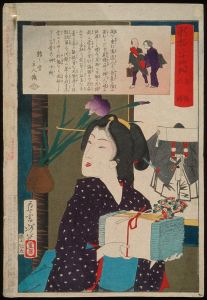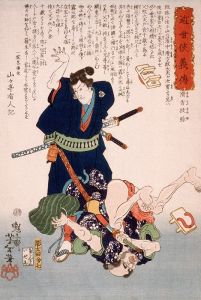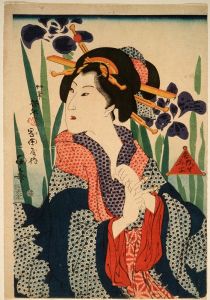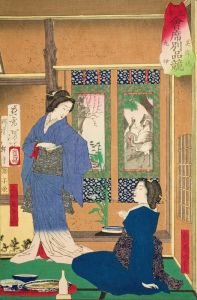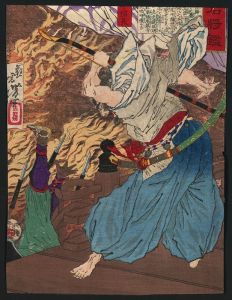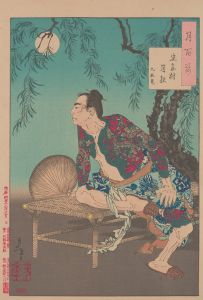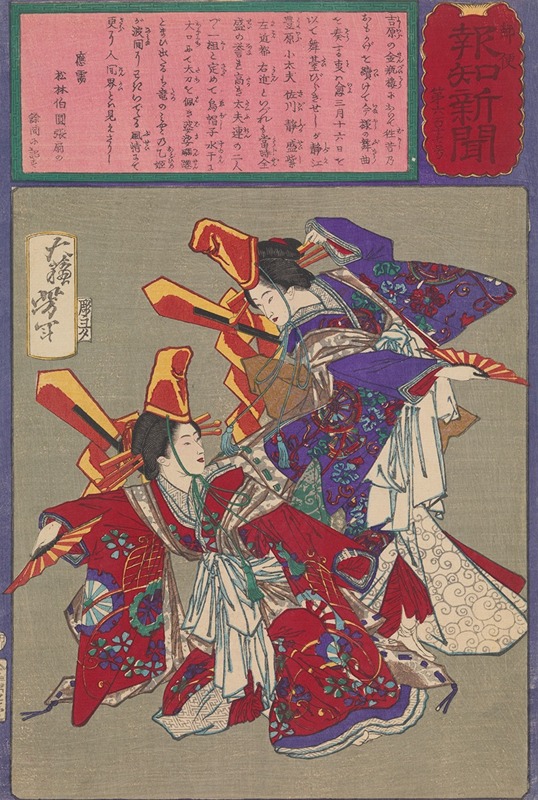
Imayō Dance Performed at the Kimpeirō House in the Yoshiwara District
A hand-painted replica of Tsukioka Yoshitoshi’s masterpiece Imayō Dance Performed at the Kimpeirō House in the Yoshiwara District, meticulously crafted by professional artists to capture the true essence of the original. Each piece is created with museum-quality canvas and rare mineral pigments, carefully painted by experienced artists with delicate brushstrokes and rich, layered colors to perfectly recreate the texture of the original artwork. Unlike machine-printed reproductions, this hand-painted version brings the painting to life, infused with the artist’s emotions and skill in every stroke. Whether for personal collection or home decoration, it instantly elevates the artistic atmosphere of any space.
"Imayō Dance Performed at the Kimpeirō House in the Yoshiwara District" is a woodblock print created by the renowned Japanese artist Tsukioka Yoshitoshi (1839–1892). Yoshitoshi was a prominent figure of the late Edo and early Meiji periods, celebrated for his innovative approach to ukiyo-e, a traditional Japanese art form that flourished from the 17th to the 19th centuries. This particular work is part of Yoshitoshi's larger body of prints that often depicted scenes of beauty, drama, and cultural significance.
The print portrays an imayō dance, a contemporary style of performance that gained popularity during the Edo period (1603–1868). The term "imayō" translates to "modern style," reflecting its adaptation to the tastes and sensibilities of the time. The dance is shown taking place at the Kimpeirō House, a notable establishment in the Yoshiwara district of Edo (modern-day Tokyo). Yoshiwara was the city's licensed pleasure district, known for its vibrant entertainment culture, including music, dance, and theater, as well as its courtesans.
The Kimpeirō House was one of the prestigious establishments in Yoshiwara, frequented by patrons seeking refined entertainment. Yoshitoshi's depiction captures the elegance and sophistication of the performance, emphasizing the cultural and artistic vibrancy of the district. The dancer, likely a courtesan or a professional entertainer, is shown in elaborate attire, reflecting the high level of artistry and craftsmanship associated with such performances.
Yoshitoshi's work is notable for its attention to detail and expressive use of color and composition. His prints often combined traditional ukiyo-e techniques with innovative elements that set him apart from his contemporaries. This piece exemplifies his ability to convey movement and emotion, drawing the viewer into the scene.
While the exact date of this print's creation is not specified, it aligns with Yoshitoshi's broader exploration of traditional and contemporary themes during the transitional period between the Edo and Meiji eras. This period was marked by significant cultural and social changes in Japan, as the country opened to Western influences while striving to preserve its traditional heritage.
"Imayō Dance Performed at the Kimpeirō House in the Yoshiwara District" serves as a valuable historical and artistic record, offering insights into the entertainment culture of Edo-period Japan and the enduring legacy of Tsukioka Yoshitoshi as a master of ukiyo-e.





